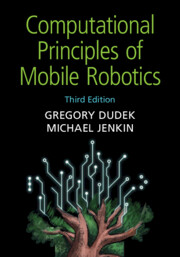Refine search
Actions for selected content:
48580 results in Computer Science
8 - Faces
-
- Book:
- Polytopes and Graphs
- Published online:
- 14 March 2024
- Print publication:
- 21 March 2024, pp 340-393
-
- Chapter
- Export citation
Automated detection of edge clusters via an overfitted mixture prior – CORRIGENDUM
-
- Journal:
- Network Science / Volume 12 / Issue 2 / June 2024
- Published online by Cambridge University Press:
- 21 March 2024, p. 201
-
- Article
-
- You have access
- Open access
- HTML
- Export citation
Contents
-
- Book:
- Polytopes and Graphs
- Published online:
- 14 March 2024
- Print publication:
- 21 March 2024, pp vii-x
-
- Chapter
- Export citation
Index
-
- Book:
- Polytopes and Graphs
- Published online:
- 14 March 2024
- Print publication:
- 21 March 2024, pp 449-466
-
- Chapter
- Export citation
Appendix B - Topology
-
- Book:
- Polytopes and Graphs
- Published online:
- 14 March 2024
- Print publication:
- 21 March 2024, pp 400-402
-
- Chapter
- Export citation
7 - Diameter
-
- Book:
- Polytopes and Graphs
- Published online:
- 14 March 2024
- Print publication:
- 21 March 2024, pp 305-339
-
- Chapter
- Export citation
Frontmatter
-
- Book:
- Polytopes and Graphs
- Published online:
- 14 March 2024
- Print publication:
- 21 March 2024, pp i-iv
-
- Chapter
- Export citation
2 - Polytopes
-
- Book:
- Polytopes and Graphs
- Published online:
- 14 March 2024
- Print publication:
- 21 March 2024, pp 44-154
-
- Chapter
- Export citation
References
-
- Book:
- Polytopes and Graphs
- Published online:
- 14 March 2024
- Print publication:
- 21 March 2024, pp 428-444
-
- Chapter
- Export citation
Robotics goes PRISMA
- Part of
-
- Article
- Export citation
Radioatelier: Czech radio space for acoustic art 2003–2022
-
- Journal:
- Organised Sound / Volume 29 / Issue 1 / April 2024
- Published online by Cambridge University Press:
- 20 March 2024, pp. 38-51
- Print publication:
- April 2024
-
- Article
- Export citation

Computational Principles of Mobile Robotics
-
- Published online:
- 19 March 2024
- Print publication:
- 08 February 2024
-
- Textbook
- Export citation
Preparing teachers for the future: Microteaching in the immersive VR environment
-
- Article
-
- You have access
- Open access
- HTML
- Export citation
Discounted densities of overshoot and undershoot for Lévy processes with applications in finance
- Part of
-
- Journal:
- Probability in the Engineering and Informational Sciences / Volume 38 / Issue 4 / October 2024
- Published online by Cambridge University Press:
- 19 March 2024, pp. 644-667
-
- Article
-
- You have access
- Open access
- HTML
- Export citation
Evaluating large-language-model chatbots to engage communities in large-scale design projects
-
- Article
-
- You have access
- Open access
- HTML
- Export citation
Using the Five Safes to structure economic evaluations of data governance
-
- Journal:
- Data & Policy / Volume 6 / 2024
- Published online by Cambridge University Press:
- 18 March 2024, e16
-
- Article
-
- You have access
- Open access
- HTML
- Export citation
Sarah Washington(ed.), RadioArtZone. Berlin: Hatje Cantz Verlag, 2023. ISBN: 978-3-7757-5515-3.
-
- Journal:
- Organised Sound / Volume 29 / Issue 1 / April 2024
- Published online by Cambridge University Press:
- 15 March 2024, pp. 101-102
- Print publication:
- April 2024
-
- Article
- Export citation
Domain adaptation with transfer learning for pasture digital twins
- Part of
-
- Journal:
- Environmental Data Science / Volume 3 / 2024
- Published online by Cambridge University Press:
- 15 March 2024, e8
-
- Article
-
- You have access
- Open access
- HTML
- Export citation
An experimental evaluation of robot-stopping approaches for improving fluency in collaborative robotics
-
- Article
-
- You have access
- Open access
- HTML
- Export citation
